Editor's note: Parrot introduced a fixed-wing drone - Parrot Disco the day before yesterday. Although the fixed-wing drone is not exclusive to Parrot's original product, it uses fixed-wing consumer-grade entertainment drones. Parrot is definitely known as such. A pioneer in the machine. Therefore, there is a high hope for this drone industry, but the price of 1299 Euros makes many people find it difficult to accept. So why is Parrot Disco so expensive? This article source spectrum, author Evan Ackerman participated in this conference and experienced the drone. The article introduced the experience process in detail, and explained why Parrot Disco is so expensive.
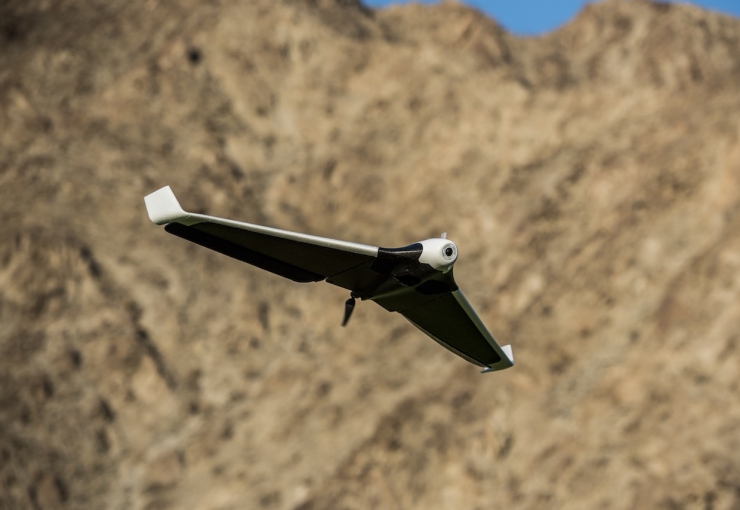
Photo: The British Craig/Parrot Disco drone, even for novices, is also very easy to use. It has an automatic flight system, flying distance and first-person perspective.
Yesterday morning, Parrot launched everything that the Disco drone had, not just the drone itself: The user could also get Parrot Skycontroller 2 remote control handle and a first person perspective (FPV) headset Parrot Cockpitglasses. The user’s smartphone will be used. This device will be available in September this year and will sell for $1300. We attended the conference in Palm Springs, California, and we spent a few hours on an outdoor golf course at 106 degrees Fahrenheit to find out if the Disco drone was worth the price, especially for those who just touched the fixed wing. Drone people.
We were all tanned, but drones also left us with a very deep impression. One of the reasons why this drone is so expensive is: Parrot has installed many high-tech hardware and software for it, which cost a lot of money . But as a result, the drone is very easy to use for novices, and it is also very enjoyable for experienced pilots. The Disco drone is very powerful. It has great video recording capabilities and a ready-to-use first-person perspective system. Is it worth the price? We look at it in detail.
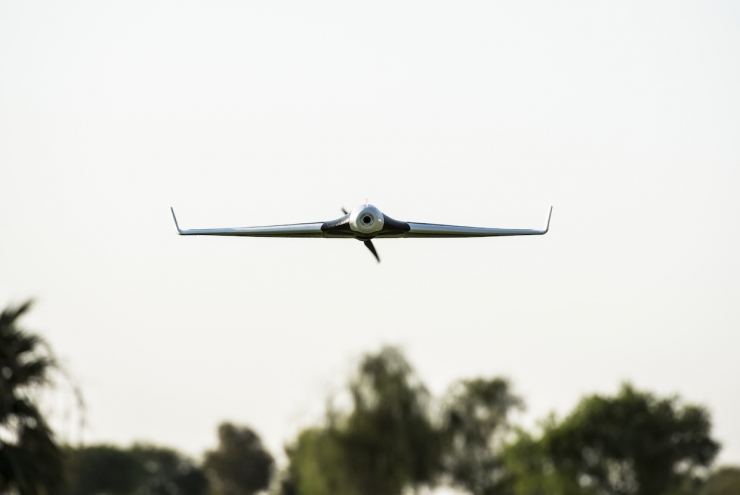
Image: Craig/Parrot PParrot Disco is a fixed-wing drone powered by a single propeller.
When we appeared on the golf course yesterday morning, I took it for granted that Parrot would give us simple basic flight training, but no, they were very confident with Disco drones. They only told us "this is the role of the control device, how to fly here to avoid hitting the mountain or the tree. Play it!" Foreword, okay. Maybe I need to say something here. I have never flown drones like this before, and I rarely fly past other drones. So, all of the following ideas are from a person who knows nothing about flying a drone.
Let's get started, let's first take a look at the controller.
Controller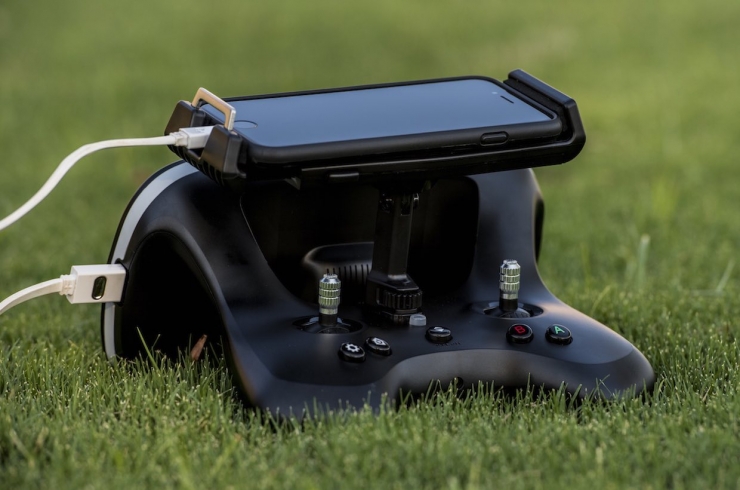
Photo: The Brian Craig/Parrot Home button is also an "Oh, Bad" button used in an emergency. This button allows the drone to quickly balance and fly to a safe height before returning.
The controller is operated with two spring-loaded joysticks and is operated much like a wirelessly-controlled aircraft.
The Y axis on the left of the manipulator is the thrust bar, and the X and Y bars on the right are roll and pitch, respectively. This left the left X axis idle: In the traditional sense, this axis is the control yaw, but the Disco drone has no yaw control because it uses lifting ailerons and no rudder. However, controlling the left X-axis in any direction will put the drone in the 徘徊 mode. This is useful and easy to master: At any time you want to take a break, tap the left controller left or right, the autopilot system will immediately take over, let the drone hover in the right place, know that you take over again ( This is the so-called mode. If you completely let go without touching the cymbal mode axis, Disco does not have the chance to reliably let the horizontal line fly, which allows it to avoid a variety of potential problem situations.
There are some other buttons on the controller, all of which are useful:
Left trigger and turntable: Switch first person perspective mode, adjust first person camera pan/tilt
Right trigger: adjust phone camera view
Home button: When this button is pressed, no one will automatically return to the GPS location to take off and hover in the air. At the same time, this is also an emergency button. When the drone gets out of control and you can't help but say "Oh, it's not good," the Home button allows the drone to quickly enter a steady state and fly back to a safe height before returning.
Takeoff/Landing Button: Takeoff or Landing. If you press the wrong landing button and the drone is in the process of landing, you can click this button again, and no one will enter the takeoff mode, and it will automatically fly to the height of 50m and enter into the shuttlecock mode.
A and B buttons: programmed
Mobile phones are optional, but Parrot wants users to use mobile phones most of the time. With a USB cable, the phone can be connected to the controller to receive streaming video and important telemetry information, including the battery life of drones and manipulators.
take offTaking a Disco is just as easy (or difficult) as throwing a Frisbee. If you've ever thrown a frisbee before, it's very easy. If you don't know how to throw a frisbee, you may need to practice. The UAV is grasped like a Frisbee, and the manipulator can be grasped with the other hand or placed on the ground. Like the Frisbee, the Disco drone does not recognize and avoid obstacles, so you need to find an empty place with no trees or tall buildings to make it safe to take off. The drone is facing the wind, and you press the takeoff/landing button, and no one has the opportunity to speed up the spin motor. It starts slowly (as if it is preparing) and then runs at full power. Once powered, start dragging, swing it forward and up, and the drone will take off. After being thrown out, drones don't need much power. The most important thing is to give the drone the ability to accelerate upwards and make it take off at the right time. Even if it is thrown low or thrown to the side, the drone can cope with it, and you can quickly get yourself into a stable state and fly to a certain height. It looks very surprising, because it makes you realize how powerful the autopilot system is. But it is worth mentioning that if you accidentally throw the drone aside, it will fly upwards in the direction of the throw. This is why you are looking for an empty place or a direction.
Once the drone is thrown into the air, it will quickly fly to a height of 50 meters at a steep angle and then slowly hover. When doing these operations, you don't need to do anything else. If you prefer to take part in the takeoff process with both hands, you don't even need to hold the manipulator. You can throw the controller wherever you like, fly the drone, and slowly calm yourself down as you wish, then pick up the manipulator to control the drone. The drone doesn't care - it's even nice to hover in the air until you're ready. Â
In flight 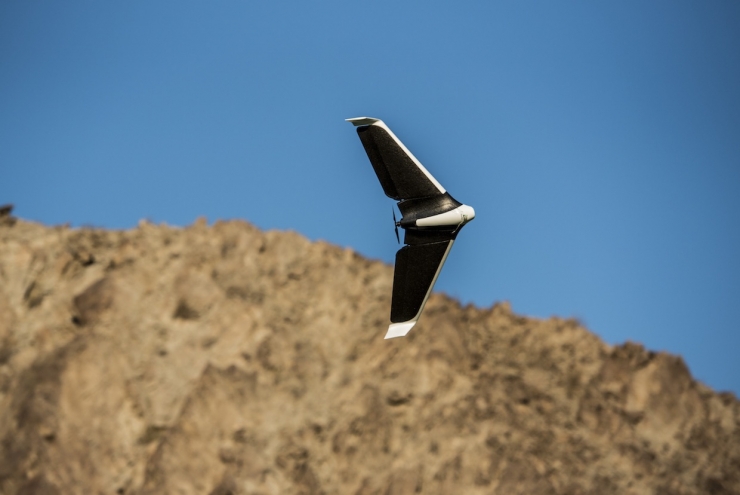
Photo: All instruction given by Brian Craig/Parrot users to Disco will be intercepted and reconciled by the Autopilot system to keep the UAV flying stable.
The user takes control of the drone from the autopilot system by simply toggling one of the joysticks. When the joystick is toggled, no one has the opportunity to immediately turn to manual driving, and there will be no apparent delay in the response. Any instruction given by the user to the Disco drone will be intercepted by the autopilot system and properly adjusted, which will ensure that the drone will fly smoothly. For example, when you roll the aircraft 90 degrees to the right, the autopilot system will roll the drone 30 to 40 instead of rolling completely. When you prevent the drone from stalling, the autopilot system will increase the throttle. In fact, it will not stall the drone at all by forcing the minimum airspeed. Regardless of whether or not you enter an order, the autopilot system will keep the drone stable in pitch and roll.
In general, I found that the Disco drone was much easier to control than the quadrocopter. One very simple reason is that the Disco drone always flies forward. A four-rotor aircraft, the "forward" direction is free, because they can fly in any direction, and if the quadrotor does not point directly away from you, then you need to rotate all the control axes. For example, if a quadrocopter hovered in front of you, you rotated it 90 degrees to point it to your right, and now you have to use the roll control on the left to make the plane fly in a forward direction from your perspective . It is very important to understand this (especially considering distance and speed), and this is probably the biggest reason for the destruction of the quadrocopter. The Disco drone is a flying wing aircraft and will always fly forward. All manipulations are consistent with its forward flight, which allows the controller (at least me) to easily master flight skills without the opportunity to fly and without any training. Even a circular flight or a figure eight flight is easy to master. However, I felt a bit tricky when the drone came straight to me. I also need to emphasize that if you get out of control, you can make the drone enter the cricket mode or press the Home button at any time.
For people who are just beginning to drone or fly-wing aircraft, the Disco drone autopilot system is awesome. Pilots need to spend a lot of time mastering tricks like minimum flying speed, pitch control during throttle switching, and other tricks that are already included in the autopilot system. You don't need to worry about anything at all. So I guess, for many beginner beginners, the high price of Disco drones is reasonable.
For people who are just beginning to drone or fly-wing aircraft, the Disco drone autopilot system is awesome. The first time I operated the Disco drone was very happy and there was no pressure. The pilot's flying skills (I guess) that take a long time to master, like minimum flying speed, coordinated turns, pitch control during pitch change, and other tricks, are already included in the autopilot system. The Disco drone began its flight and the automated system began to work. How do you want to fly, how does it fly? It flies even better than you think. You don't need to worry about anything at all. This is very surprising, and I think for a lot of drone beginners, this makes Disco's high prices very reasonable.
To talk about the advantages of drones, this will be a different story. If you use the Parrot controller, the automatic flight system (ie how it intercepts and adjusts your instructions to the drone) is not an option. You can't shut it down or even reduce its effect dramatically. However, after connecting your own wireless remote control is very easy to connect, you can achieve full manual control. If you set up according to Disco, you can also take advantage of the Disco Booster's take-off, landing, shuttle mode, and return to take-off points. In general, I feel that the Disco automatic flight system has a conservative nature. I hope to see these softwares give everyone more choices and let everyone grow into a pilot.

Photo: Brian Craig/Parrot
Simply talk about the flight distance: the flight distance is very, very far. Parrot's official flight distance is 2 kilometers, but we have heard that they have successfully made the Disco drone 3.2 kilometers and get a first-person view streaming video. awesome. We are talking about Disco at the moment. This is without any modification. With such a large potential flight distance, the horizontal and vertical geo-fences that come with it are an important feature that must be said. With this application software, you can tell the drone that you don't want it to fly too far, and that no one will obey it happily. And you must remember that no matter where the drone flies, just press the Home button and it will fly back to the departure site.
Battery life, Parrot's official announcement time is up to 45 minutes, but after this day's test flight, we found this figure is a bit conservative. If you don't keep accelerating (Disco's top speed is 80km/h) or if you're overrunning and just roam around, the 60 minute run time is more accurate.
Landing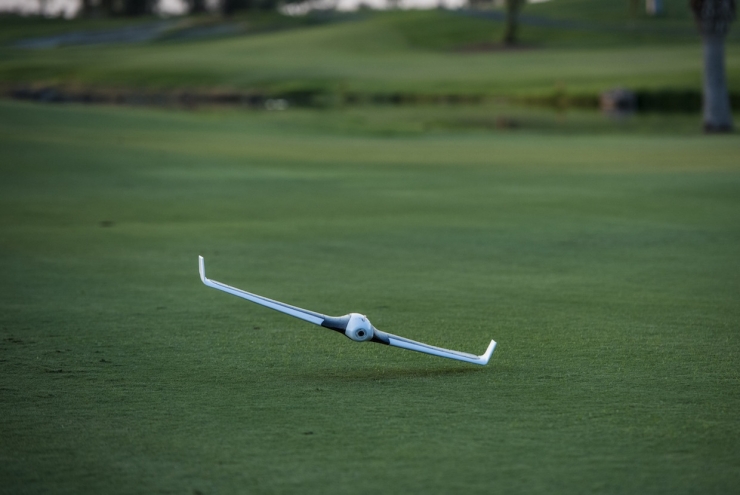
Photo: Brian Craig/Parrot without landing gear
Like real aircraft, taking off and landing are tricky. Parrot has made landing as simple as possible, but it still contains some tips. Because (unlike a quadrocopter), Disco needs a very fast forward speed when landing. This means you need to have a runway - maybe 50 meters of smooth, open and (ideally) softer space, like an empty pasture. If you are more skilled, 50 meters (the length of the Olympic swimming pool) may be a bit long for you. However, it is still suitable for beginners. Remember that Disco doesn't identify obstacles, it doesn't hide, you have to plan where it lands or it will hit anything that blocks the way.
Here's how it lands: When you press the takeoff/landing button, Disco slows down and lands on the ground at a safe speed. You want to let the drone slow down before pressing the takeoff/landing button (for example, the throttle is at the midpoint and stays 10 to 20 meters or less). Decelerating and lowering the flight altitude before pressing the takeoff/landing button will make it easier to control the landing site. When Disco drops in landing mode, you have limited control over him: You can adjust the direction of advance by rolling, and increase the landing distance by pitching, but if it does not fall fast, you cannot speed up the landing. If there is a problem, you can press the takeoff/landing button again, which will cause the drone to stop landing and accelerate again to fly at a height of 50 meters. If everything is working well, the landing itself is actually a controlled gentle fall: When Disco realizes that it is only a couple of meters from the ground, it pushes the throttle backwards, stops, lands and slides a few meters until it stops. When properly handled, everything will be in order. When the drone touches the ground, the hinged propeller will fold back smartly. Improper handling, the wing will fall, you need to reload them. Surprisingly, this is not a big problem.
Crashed
Photo: Evan Ackerman / Technology Overview
The most unexpected thing for me was to look at how long the Disco drone can knock something down. There are many Disco drones flying in the air. Perhaps there are 10 golf courses that can fly to 18 holes. In more cases, at least one of them will hang on the tree. Not only Parrot's customers will lead to this result, and sometimes engineers will crash the aircraft during the show. When a guy used a radio remote control (R/C) manipulator to display Disco's all-handed control mode, the drone hit the palm tree directly, both wings fell, and the fuselage fell into a nearby lake.
Disco, just fly, don't worry. With one exception, no other drone has been damaged by their ability to immediately take off. The drone's foam body was a bit scratched in some cases, such as the drone crashing into a dwarf bush with jagged stings, and the bushes had deep cracks in one wing. But this has no effect on the wing, so it will not cause trouble to the drone or affect its flight performance. Even if the drone wing is really broken, the wing is just polystyrene. Not only is the replacement cheaper (though we don't know how much money yet), but you can repair the wing with ordinary glue, even if the wing is broken. If the elevon is damaged, stick it with tape. Parrot will sell you spare parts if it doesn't work, but we don't know the price of spare parts yet. As far as we know, wings are the most vulnerable, but they are pure foam, so I can't imagine how expensive they can be repaired. All the valuable parts are in the center of the fuselage, and it (according to my experience) is like a tank protecting these accessories. Parrot does not provide accessories, but if you are really successful in breaking down the original parts of the drone, it must be because you are deliberate.

Photo: Evan Ackerman / Technology Overview Splashing! Well, what's going wrong?
The strength of Disco drones is an unusual experience for those who are accustomed to aerial robots (or collectively robots). In general, hitting something at high speed means that expensive parts will be crashed. For Disco, the collision is part of the flight. Collisions occur from time to time, but this is nothing. This will not cost you time or money and will not bring any pressure. Oh, what do you do when you occasionally try to control the plane and fly over the bushes? Stick back, reset the drone, and fly again. It's that simple. Prepare a pole or a ladder in case you need to remove it from the tree.
video
Photo: Brian Craig/Parrot Disco is equipped with a 14-megapixel super wide-angle digital camera
Once you fly a drone, it starts shooting video with your own camera. The video will be in the drone in the format of Mp4. If you connect the drone to a computer with a USB cable, the drone will be like an external drive and you can get all the video. As long as you are not using a drone to perform acrobatics, the resolution of the captured video will be very high (1080p 30 FPS) through debounce processing and deblurring. The video quality of the Disco drone is much higher than that of a quadrocopter and there is no need to compare it. But if you compare, you will find that Disco's video is even better than you think.
During the test flight, none of us thought that Disco had no chance to record our entire test flight. After the test flight ended, I remembered downloading video from drones. Now we are editing some videos for users to watch.
First-person perspective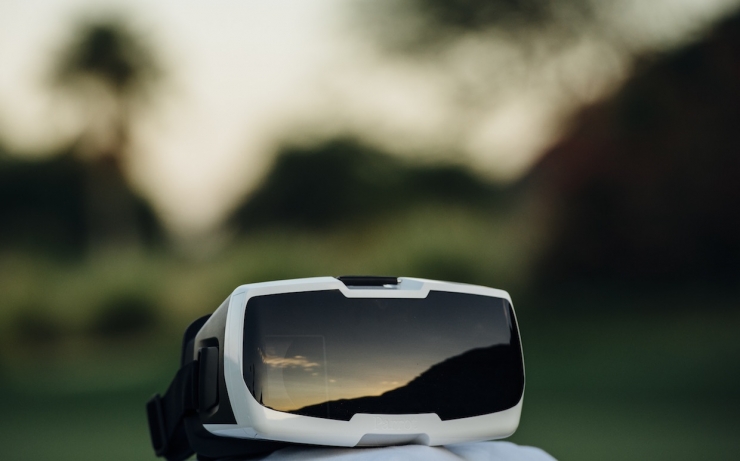
Photo: Brian Craig/Parrot does not include a smartphone
The Disco drone comes with a first-person view (FPV) system: Put your (Apple or Android) mobile anti-theft headset on the device. There is a lens in the headset, the nose view of the drone will generate a 3D view, and the phone can display split video. Connecting the phone to the controller via the data cable (luckily, without a dedicated connector), this is a little uncomfortable when setting up, but the operation is not a problem.
A first person perspective (FPV) headset will completely cover your eyes and the video stream will occupy your entire field of vision. The purpose is to make you feel like you are sitting in the virtual cockpit of the Disosco drone. But note that this is the first-person view, not the first-person control: You still need to use the manipulator to control the drone flight; the headset is just to get the first person perspective.
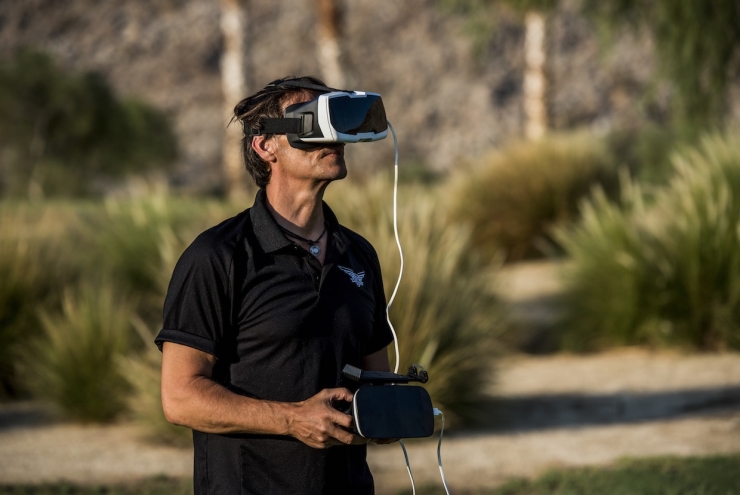
Photo: Brian Craig/Parrot FPV headset is just to provide a first-person perspective, not first-person control: you still need to use the manipulator to control drone flight; the headset just shows you the drone To something.
When I experienced the first-person perspective in the morning, I felt it was on a node between functionality and usability, and availability was sufficient for user needs, but not good enough. The video quality can be, but the frame rate is slightly insufficient. I can control drone flight, but it doesn't give me the kind of "wow, I'm superman" I expected. Parrot engineers explained that FPV encountered two problems: First, a dozen or so Disco drones were flying in the air. Although we use the entire golf course, this still means that many drones have overlapping flight areas. This makes the wireless environment of the 2.4-Hz band used by Disco very noisy. In this environment, we want to control them completely without problems, but the HD video streaming from another drone is another matter. The second point is that the outside is really super hot. Disco designed the flight temperature to be 5°C to 35°C, reaching 10°C at 10:00 a.m. Drones and mobile phones are overheated—though the impact is not particularly great, there are certain challenges in handling HD streaming video well, and the flow of information will be reduced.
The afternoon is much better. The weather is very cool, but many people have already ran back to the hotel, so only a few of us stay. Only a few UAVs were flying in the air (compared to the 13 in the morning and now only two or three), which greatly improved the FPV experience. Of course, the video quality does not reach the level of the head-mounted display, because the display is based on the user's mobile phone after all, but we still experience the feeling of real flight. When you point the manipulator at a drone and let the drone fly straight, the video quality is highest. However, when the manipulation amplitude fluctuates, the video quality will slightly decrease. Parrot claims that when it is in a relatively quiet radio frequency environment, users can continue to obtain higher quality video. However, we did not personally understand it.
When flying, you can choose from several different FPV modes. There is a pure streaming video mode, a streaming video mode with telemetry and artificial horizons, and streaming video with radar coverage. The radar shows the drone's flight direction relative to the manipulator. This can help you keep the radar antenna pointed at the drone and get a better signal. You can also choose to switch to the augmented reality view, which will stream video from your phone camera to you. This switch is convenient. It not only makes it easy to fly UAVs with FPV headsets, but also has radar coverage to highlight the drone's position. If you are not sure what the first-person perspective is, you can observe it very easily in the air (or on the tree). Unfortunately, the last mode requires the exclusive use of cell phone sensors, which makes the FPV scene unable to use the Disco camera to give your head-controlled PT console experience, otherwise you can experience it. This is a bit disappointing.
I thought FPV would make Disco easier, because I think FPV will make you feel like sitting in the cockpit of an airplane. But this is not the case - FPV is a different challenge. The FPV delay distance is 250m, which takes time to adapt, but it takes a few more flights to adapt. This is definitely a completely different point of view. The true flash of the FPV is in long-distance flight, and the visual control is not practical in long-range flight.
Federal Aviation AdministrationThis is a key question about the Disco drone - the Federal Aviation Administration (FAA) drone management regulations. As Parrot pointed out in the footnote to the press release, "the use of Parrot Cockpitglasses requires the presence of other drivers." At least for now, the FAA requires that drones must remain within the visual range of a person capable of manipulating their flight while flying.
This severely limits the distance traveled by Disco, making it far below the maximum flight distance. In fact, since the user's allowed flying distance is limited (at least in the United States), Disco's important selling point has no value. Finally we heard that the Federal Aviation Administration is actively exploring flights beyond the visual range. We believe (at least for Disco) that the automatic flight system can properly exceed the visual flight range.
future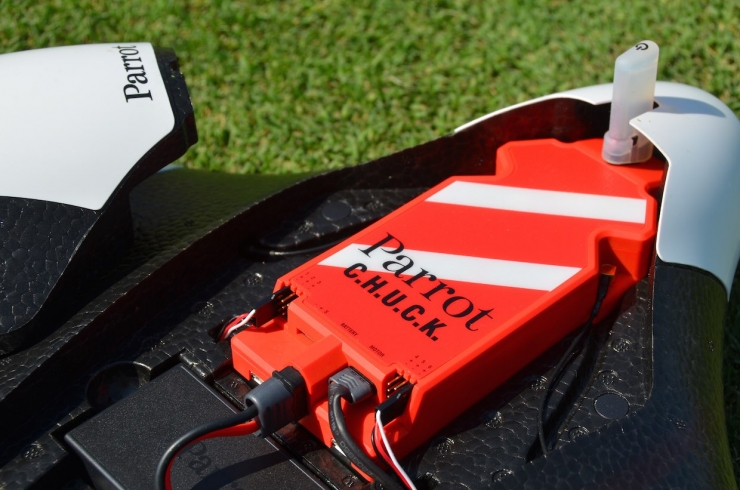
Photo: Evan Ackerman / "Science and Technology Overview" Disco drone body is a large lithium battery and is called CHUCK (control center and general computer equipment) autopilot system.
Disco's autopilot is based on a Linux system, which includes a software development kit that allows you to set up drones as you like. All the autopilot connectors are standard, and it has been very simple to add gears to Disco. In fact, Parrot only sells the autopilot module, and then allows you to build your own aircraft around the autopilot module. At the same time, using these high-tech automatic flight and assisted flight features make it easier and more reliable to operate Disco. Parrot also offers an app upgrade worth $20, allowing Disco to fly completely automatically. In this application, users can set the GPS navigation point followed by the drone so that the drone can even land on its own. Finally, we heard rumors that Parrot is considering providing a payload for Disco — sounding that Disco drones can easily take off. Â
Should you buy it?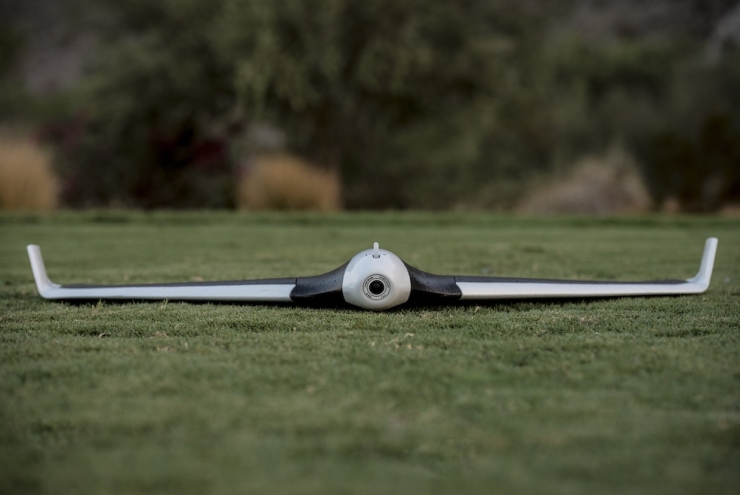
Photo: Brian Craig/Parrot
We must clearly understand this: $1300 is not a small number for drones.
Disco is not a toy that you can buy for fun - it's an expensive high-tech product with a high-end laptop or monocular digital camera. You can certainly buy a good four-rotor aircraft with less money and spend less money. The flying wing, made mainly of Styrofoam, does not feel so expensive (must be cheaper than a quadrotor, right?). But according to our test flight yesterday, there are indeed many reasons why Disco is worth the price.
Skycontroller: Radio equipment is usually the most expensive (and most important) part of a drone. Parrot's second-generation Skycontroller is aimed at pilots and mid-level pilots, and a large number of Wi-Fi antennas at the tail can keep you in touch with drones that are thousands of kilometers away. The design is complete and reasonable, driving safety. Free application software can transmit video and remote sensing information to your mobile phone, making it easy to get started and entertaining.
Simple FPV: Want to try Disco with a first-person perspective? The FPV is already installed. You do not need to buy or install anything else. When you upgrade your phone, the first person perspective experience will also get better.
Autopilot: Disco's autopilot system is incredible. We always hear those experienced people admiring Disco's autopilot during a full-day test flight! From take-off to landing, wherever it is difficult, the autopilot system can do more or less for you. During the flight, the autopilot system will not interfere with your driving, but it will always ensure that the drone is within control. You can fly it anywhere with your thoughts, but if you have a Disco stall or other fatal mistake, the autopilot system will pull you back from the edge. Also, features such as geofence, hovering ability and return to takeoff place make the flight stressless.
Ruggedness: The only thing that really makes flying without stress is that you can crash, but in most cases it doesn't matter. The bushes, the trees, the ground, whatever it was - the wings fell, stick back, and Disco was thrown into the air. If the wing is torn, it's easy to stick it with glue and tape. Because all expensive electronics are hidden inside the drone body, these materials can be protected very well. You have to adapt to the fact that there is nothing drone hanging on the tree. If you really adapt, your flight will be more interesting because low-level fears associated with unmanned flights will follow.
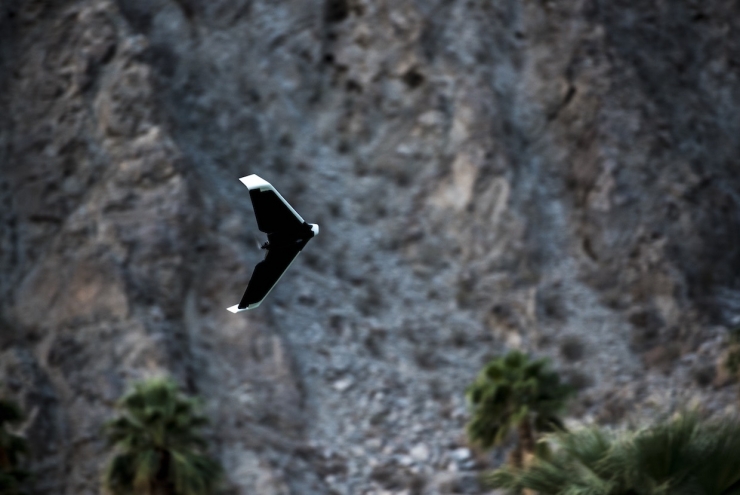
Photo: Brian Craig/Parrot
Even so, we still feel that Disco is a bit expensive considering the current competitive environment of drones. To be honest, we are not sure who the Disco is targeting the user groups. beginner? They like Disco's automatic driving function very much, but they may not spend so much money to cultivate such a hobby. For experienced wireless remote pilots? They will want a powerful all-around platform, but they will not use Skucontroller or be troubled by the autopilot system at all times. Disco seems to be more suitable between the two - they had previously flown over the quadrocopter and now look for some different new experiences. Even for this small group of people, the price of $1300 is a bit high.
If you buy the Disco drone in September, you will certainly not be disappointed, but if you wait until the price drops slightly (we think it will drop), then buying it will be better. Don't get me wrong - if you're big, buy it, because you can't find a fixed-wing drone with FPV better than Disco.
Via spectrum
Xinzhi created the public number of the robot under the leadership of Lei Feng Network (search for "Lei Feng Net" public number) . We are concerned about the status quo and future of robots, and related industries combined with robots. Interested friends can add micro signal AIRobotics, or directly scan the QR code below to follow!

